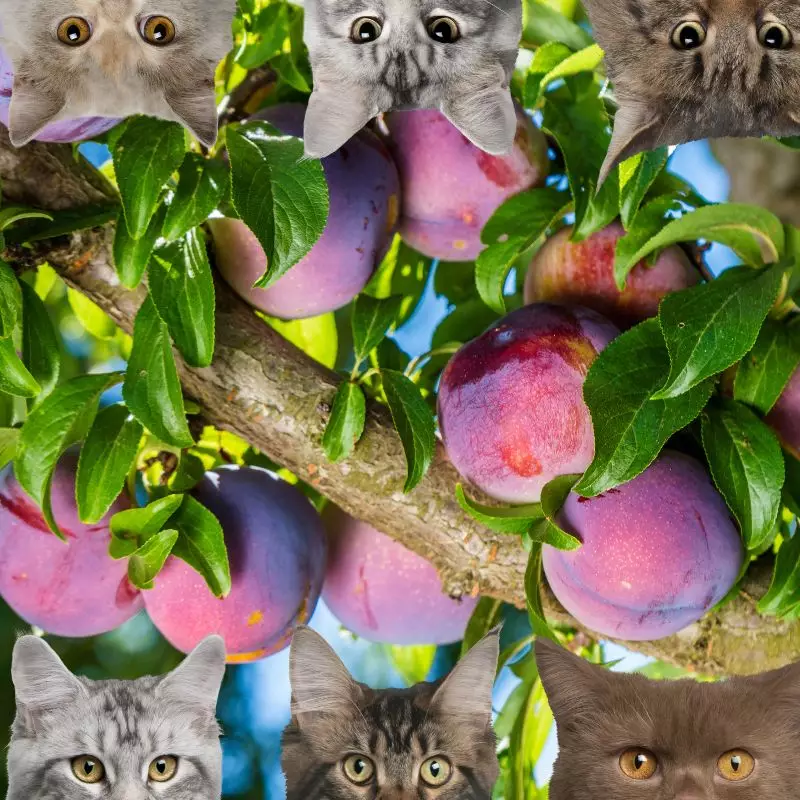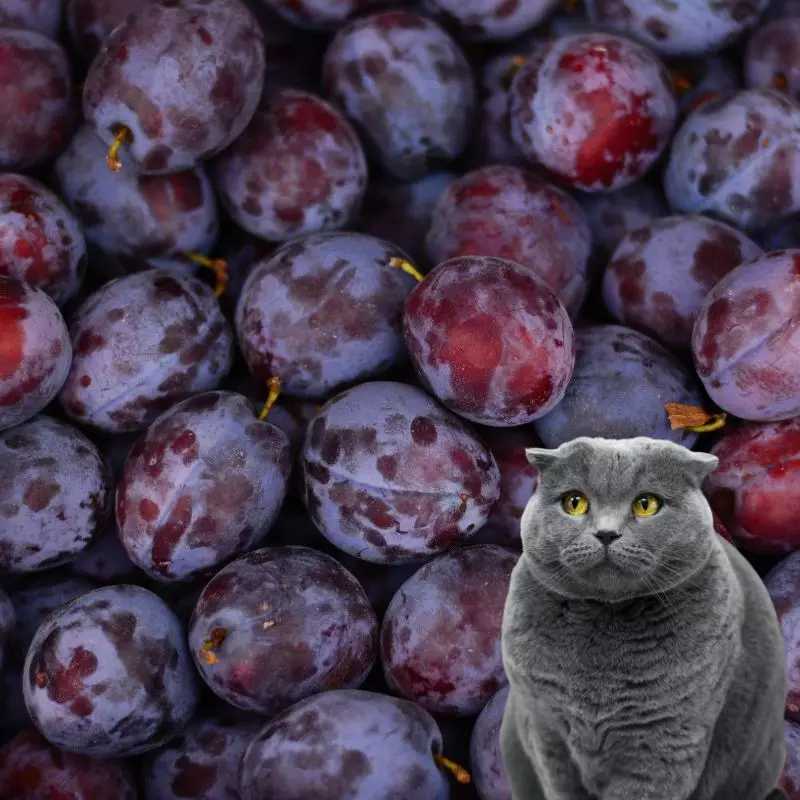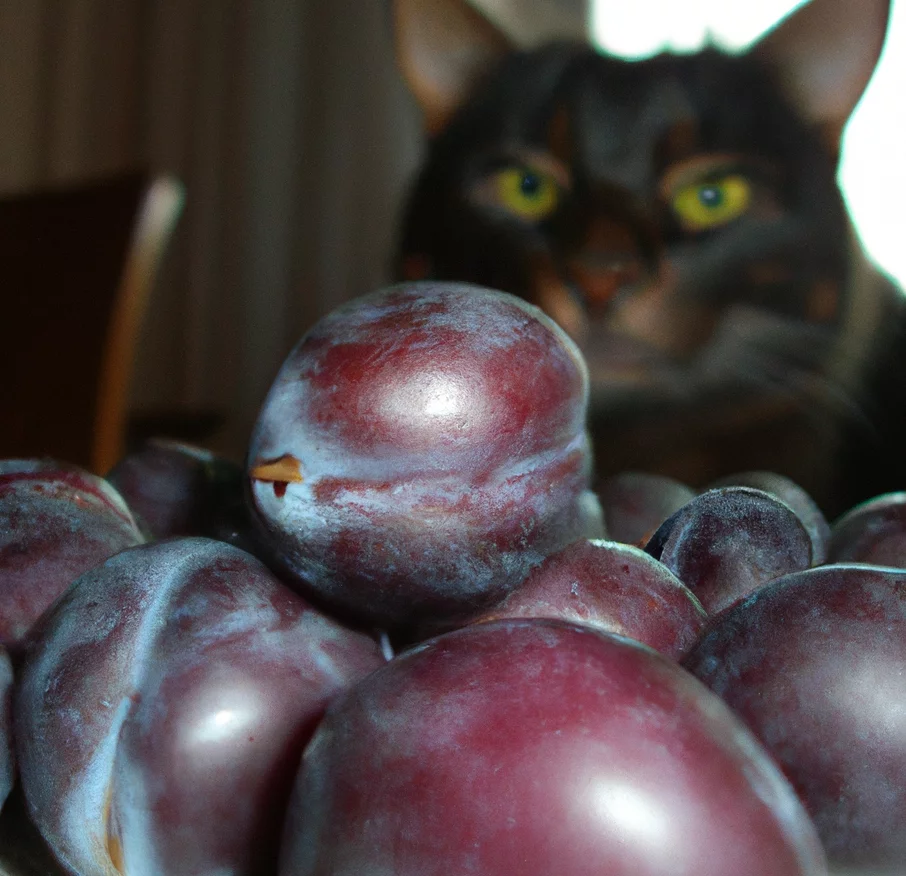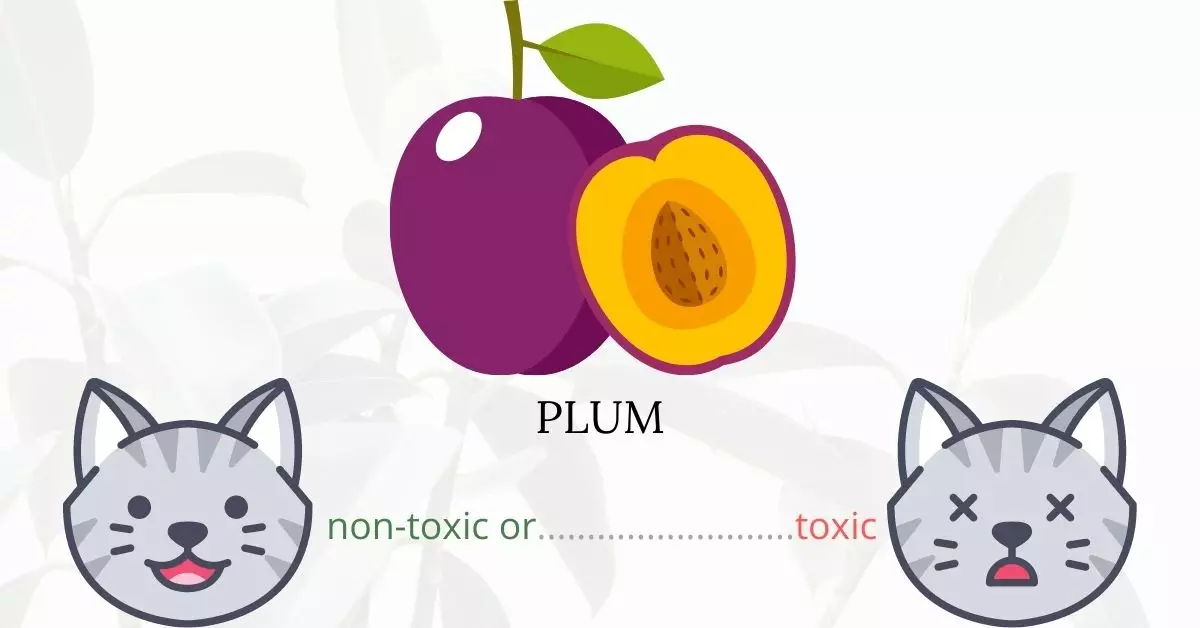Plums, indeed, pose a significant threat to cats due to the presence of cyanide in their composition. Cyanide is highly toxic and is found in various parts of the plum plant, such as the stems, leaves, and seeds. Cats that consume any part of the plum fruit or shrub are at risk of plum poisoning, with wilting plums being especially perilous as they have higher concentrations of the toxins.
This article is meticulously penned in collaboration with a team of adept Doctors of Veterinary Medicine (DVMs). Their valuable insights have greatly contributed to providing precise and contemporary information regarding the potential dangers plums and other such plants can pose to cats. To ensure the reliability of the provided information, reputable sources such as the ASPCA and PetMD have been extensively researched for every plant discussed, reinforcing the accuracy and trustworthiness of our content.
Clinical Signs of Plum Poisoning in Cats

Recognizing the signs of plum poisoning is crucial for ensuring the timely intervention and care for your cat should they ingest, come in contact with, or inhale any part of the plum plant. Here are some clinical manifestations explained along with their underlying causes when a cat is exposed to plums:
- Dilated Pupils: When cats are exposed to the cyanide in plums, their pupils may dilate. This is often a response to the toxins affecting the nervous system and altering the normal physiological functions of the eyes.
- Breathing Problems: Cyanide impacts the cat’s ability to utilize oxygen efficiently, which leads to respiratory distress. This might manifest as rapid, labored, or shallow breathing due to the body’s attempt to compensate for low oxygen levels.
- Excessive Panting: This is another sign of respiratory distress, a direct result of cyanide toxicity. Excessive panting can be the body’s desperate effort to get more oxygen due to impaired cellular oxygen use.
- Vomiting: The ingestion of plums can irritate the gastrointestinal tract of cats, leading to vomiting. It is the body’s mechanism to rid itself of the ingested toxins.
- Shock: The combination of impaired oxygen utilization and lowered blood pressure due to cyanide can lead to shock, a life-threatening condition that requires immediate veterinary attention.
- Bright Red Mucous Membranes: Particularly noticeable on the gums, bright red mucous membranes are indicative of cyanide’s effect on the blood, altering the oxygen-carrying capacity and causing hypoxia at the tissue level.
If you observe any of these clinical signs in your cat after suspected contact with a plum plant, immediate veterinary intervention is imperative to counteract the effects of the poison and to stabilize the cat’s condition. Swift action can significantly increase the chances of recovery and decrease the risk of long-term complications.
First Aid and Treatment of Plum Poisoning in Cats

Because cyanide poisoning can be lethal, the veterinarian must act fast. He might start by inhaling 0.3 mL of amyl nitrate, although this is usually reserved for emergency cases.
Sodium nitrite, which is given to your cat through an IV, is used to treat cyanide poisoning. After that, the vet can either switch the IV to inject sodium thiosulfate, a cyanide antidote, or he can give the drug orally.
Treatment for cyanide poisoning can be dangerous, and many cats may endure unpleasant side effects such as severe vomiting and low blood pressure. Throughout therapy, the doctor and his staff will keep a close eye on your cat to notice any signals of danger, such as a quick drop in blood pressure.
Recovery from Plum Poisoning in Cats

Because cyanide is such a severe poison, the sooner you get your cat’s help, the greater his chances of recovering completely. Following treatment, your cat may need to stay with the vet to be closely observed.
Once you’ve brought your cat home, keep him in a quiet and comfortable place. You should see your veterinarian and check if you need to make any changes to your cat’s food for the next several days. Treatment can be painful, and your cat’s stomach may be sensitive for several days thereafter.
Prevention of Plum Poisoning in Cats
Keep away plums from your cat’s reach. Dispose the unused parts of the fruit properly and make sure that your cat will not have access to it. Keeping your cats indoors will also lessen the chances of getting in contact with toxic plants in your area.
If you love plants but have cats at home, check out these lists:





